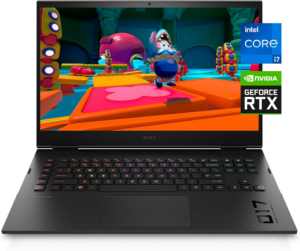If you travel quite often and would like to take your TV with you, then you cannot do that, can you? With the invention of cheaper projectors, now you can! Projectors are small and portable so you can easily travel with them and enjoy all your videos and movies on a full screen wherever you are. There are a lot of companies who have home entertainment projectors on offer on a wider price range. So it may be a difficult task for you to select the projector that would best suit your needs as well as your pocket.
Fear not. This guide has been prepared just to help you find the best projector in the market according to your need. Step by step, we will simply all the technical terms for you and also tell you how much they matter in real-world usage. Also, from our recommended home entertainment projector stores, you can check out Outdoor Movie HQ.
So let’s get started with our 14 point guide on finding the best home projector.
Things to Look for For The Best Home Projector
1. Brightness, Color Vibrancy, and Lumens
A projector’s display brightness is measured by its lumen rating. The higher the rating, the higher the brightness of the projector’s display. Higher the display brightness, quality would probably be also good which means the projector will also be a bit pricier than others.
You should select the brightness of a projector depending on what kind of environments would you be going to use it. If you will be using it in darker surroundings, then you should go with a projector with lower brightness and vice versa.
A projector with a lumen rating of 2,500 should perfectly be suitable for a normal environment with ample surrounding light. If you aren’t very sure about which kind of environments you will be using your projector, you can safely go with a projector with a lumen rating of 2000.
2. Ease of Using the Projector
Look for a projector which has a simplistic design. You should be able to set up the projector yourself with little to help required from others.
3. Choosing The Right Technology For You
There are two technologies that are widely used in projectors which are the 1-CHIP DLP and 3-CHIP 3LCD. DLP stands for Digital Light Processing and LCD stands for Liquid Crystal Display. The projectors based on DLP technology have more moving parts and are, therefore, subjected to rainbow effects and other such issues. LCD projector seems like a clear choice as it is more reliable, but it is way costlier than the DLP projectors.
If you still want a better quality projector and are willing to shell out more bucks, then you should consider LCOS projectors. LCOS means Liquid Crystal on Silicon, is the best projector technology out there and it delivers the best quality videos among all. But these projectors are expensive and heavy.
4. Connectivity
Earlier, projectors only came with VGA ports. But now, they come with HDMI ports which is very useful as for home usage, you can connect other devices easily with it and get a good quality output. Some projectors even come with USB ports for those who need to use flash drives. Nowadays, projectors come with a built-in Ethernet port and WiFi capability for easier connectivity to the internet.
5. Contrast Ratio
Contrast ratio means the difference between the brightest and darkest parts of an image. The greater the difference, the better the image will look. So select a projector with a high contrast ratio. Although, the overall quality of the display will be dependent on the quality of the screen and the brightness of the projector.
6. Sound
You need to buy a sound system which is compatible to your new projector. Therefore, select both the projector and the speaker at once after testing them individually and after connecting them together to get the perfect idea.
7. Using Projector Indoor Or Outdoor
If you intend to use your projector outdoors, then you should buy a projector with superior build quality, higher brightness, contrast ratio, and resolution. For indoor use, a well-built projector will still be required but go with the one which makes very less noise.
8. Portability
This is dependent on how much would you be traveling with your projector. If you aren’t going to travel at all or very less likely to travel, then you can have a fixed place for it. Else, go with a lightweight and small projector which you can travel with easily.
9. Durability
You should check the customer reviews who have already used this projector. Understand their experience before buying. Also, check after sales services thoroughly. Better the warranty for the projector, better is the device.
10. Display Resolution
This is also according to your need. If you are going to use it only in your house for watching movies or playing games, then go for a full HD projector, which means a projector is having a resolution of 1920×1080 pixels. However, if you intend to travel with it and would be using it for work purposes like giving presentations etc., a pixel resolution of 800×600 would be just fine. Don’t fall for the marketing gimmick and go for highest resolution projector as it may cause trouble for you to watch or show low-quality content. So choose wisely.
11. The Cost
This is the most important thing when you buy a projector. Always stay within your budget. If you have a decent budget, then you will surely find a projector that will best suit all your needs. But if you have a good budget, then you can surely go for the best.
12. Aspect Ratio
Aspect ration tells you the shape of the video/image that is being displayed. It is generally related to the source video. Maximum video content in today’s time is being made with the aspect ratio of 16:9. Many TVs can display this content in 4:3 as well. But projectors display at 16:9 aspect ratio which makes it a much better choice.
13. Screen
The display quality of the projector is equally dependent on the screen as much as it is dependent on the projector itself. If you’re going to use your projector at different locations, then a tripod roll-out screen will be a better choice. For home use, there are normal roll-out screens which can be fixed at the ceiling of your room which you can buy.
14. Lens Shift, Zoom Range
This is another important feature you should consider when you intend to use your projector frequently at different places. For shorter distances between the projector and screen, a short throw projector will be a good choice. Whereas, for use in larger places, a long throw lens should be your clear choice.
We hope you must’ve now become fully armed with everything you should know about a projector and are ready to make your purchase. If you still have any doubts left in your mind, feel free to ask us in the comment section below. We would love to answer all your questions.
















